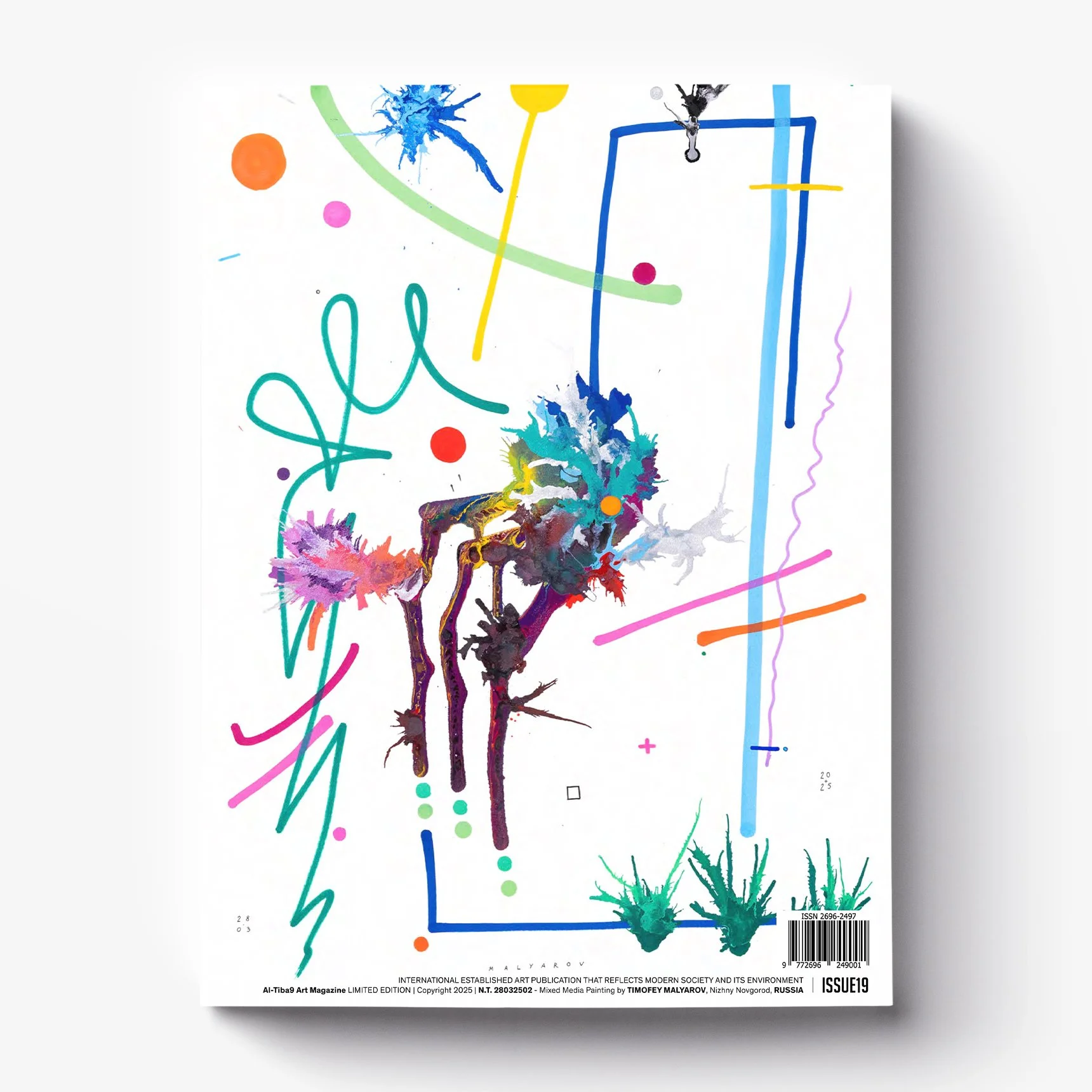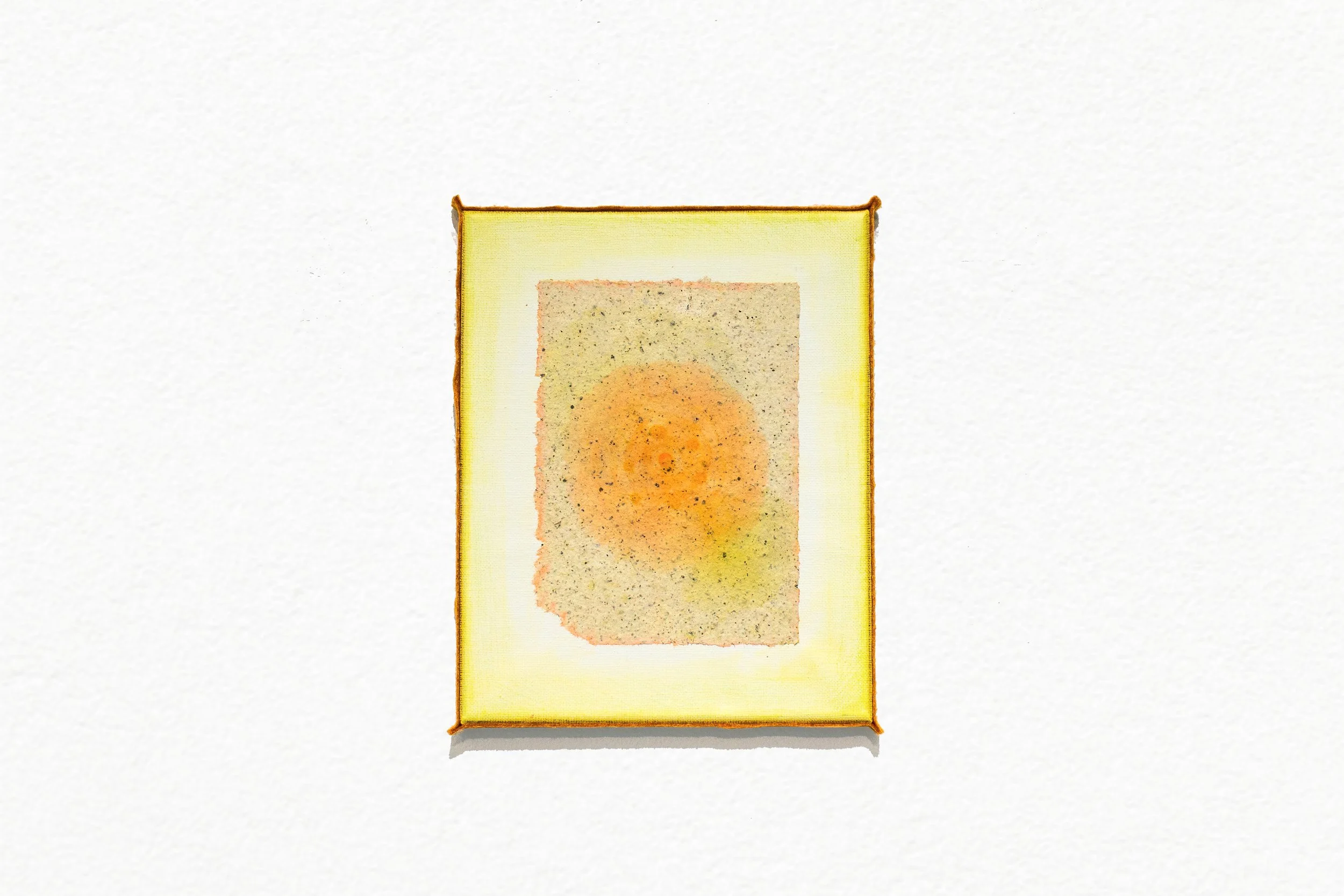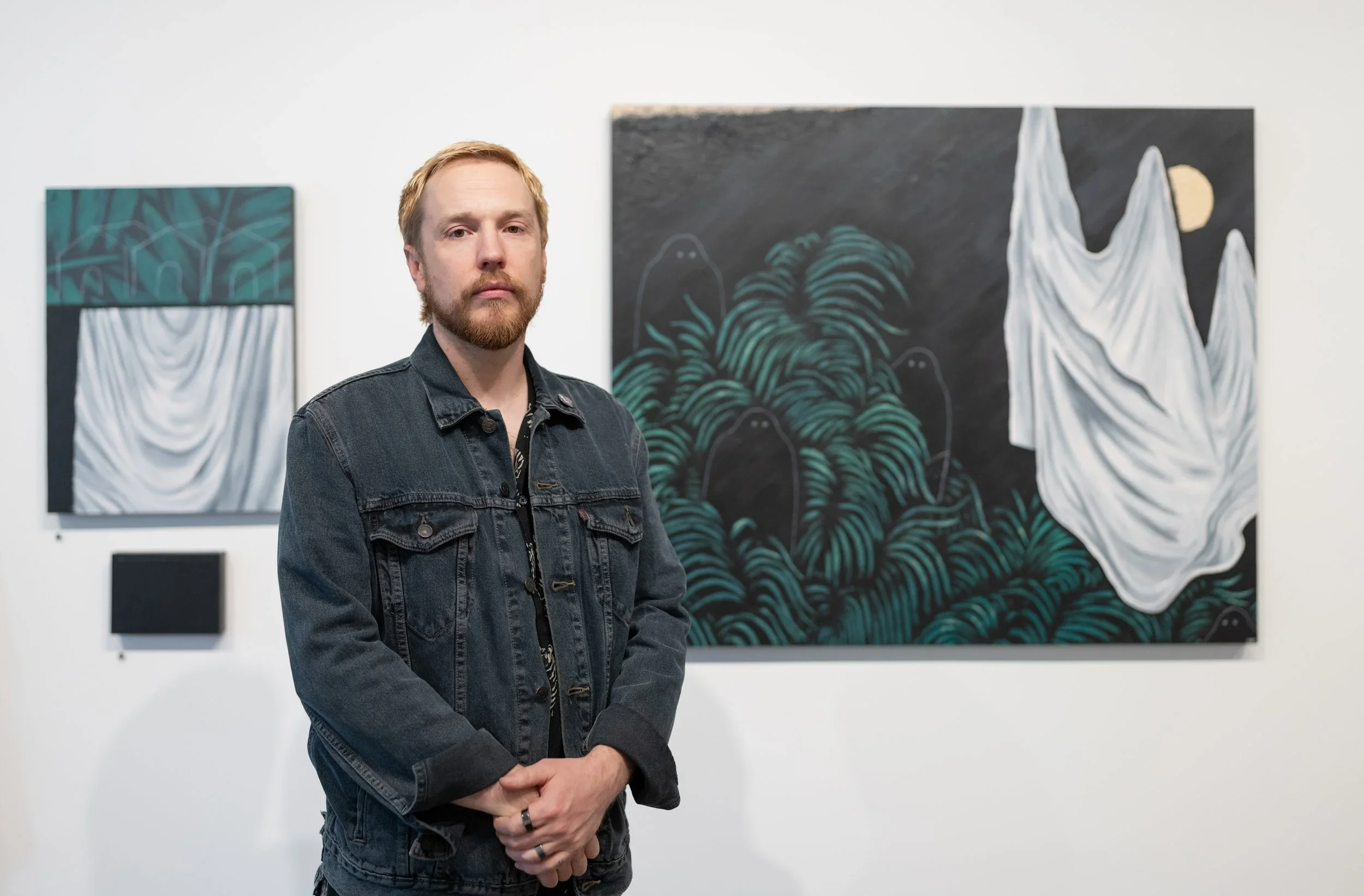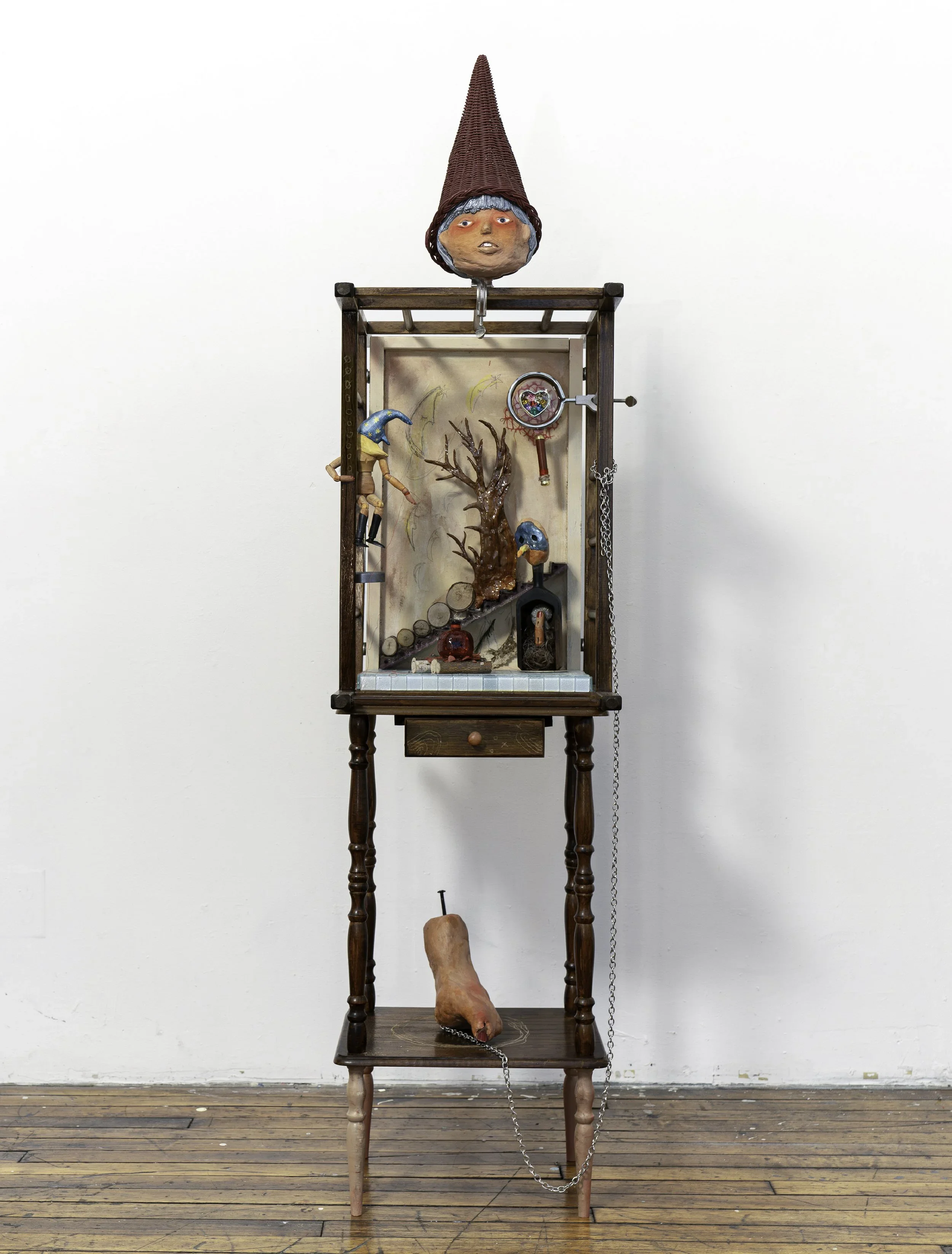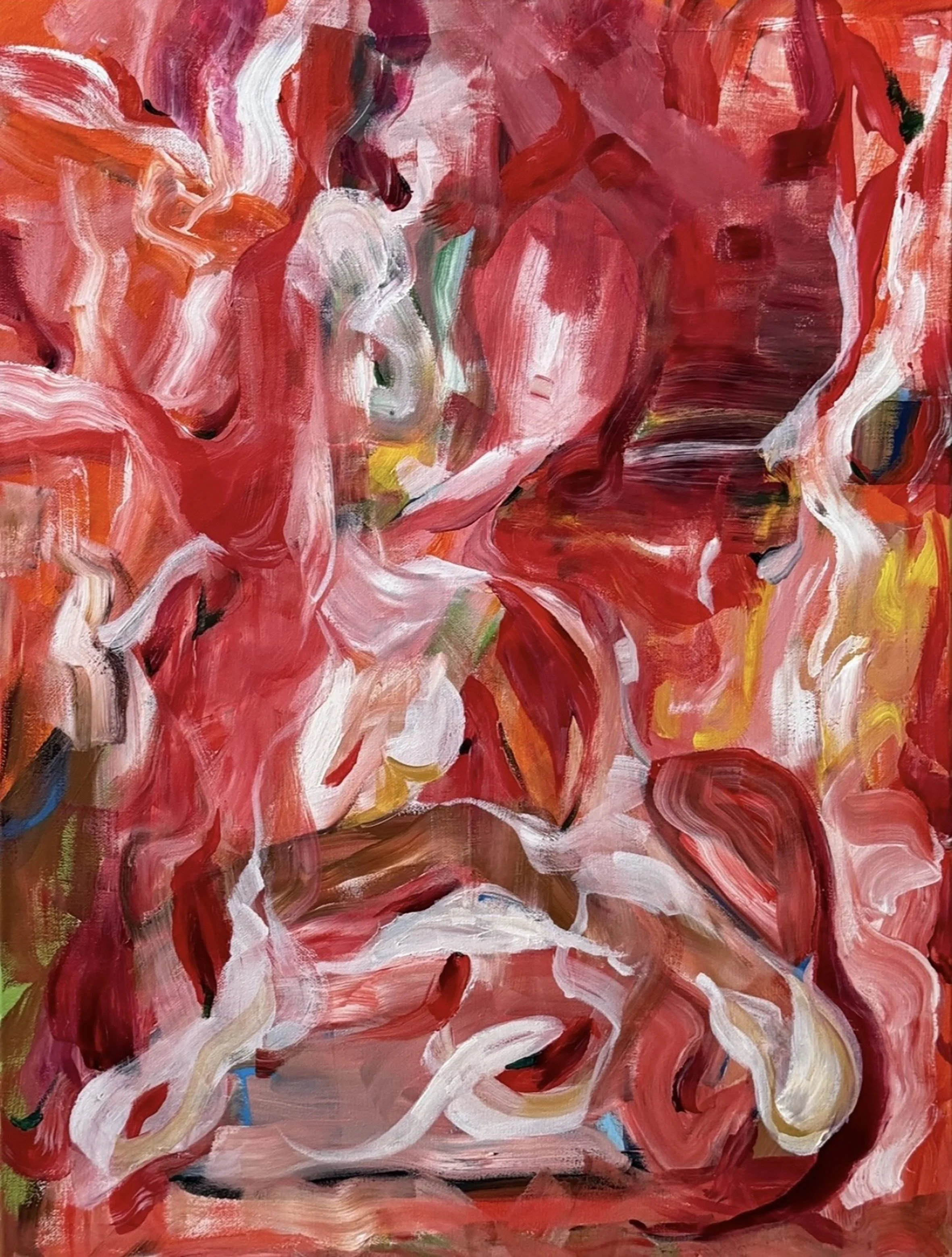10 Questions with Xi Liu
Al-Tiba9 Art Magazine ISSUE19 | Featured Artist
Originally from northeastern China, Xi Liu's early memories of spending time in her grandfather's rural village, where he farmed the land, sparked a deep, lasting bond with nature. As an interdisciplinary artist, she creates oil paintings, prints, and evolving ecosystem-based installations using handmade paper and pigments derived from plants. Rooted in Taoist and Buddhist philosophy and Jungian psychology, Liu's work explores impermanence, origin, and spiritual transformation. One ongoing project centres on a self-sustaining aquarium inspired by the origins of life in water. Her intuitive, experimental process emphasises slowness, bodily engagement, and collaboration with the unknown. Xi Liu holds BFAs from both the China Academy of Art (Traditional Chinese Painting) and the School of Visual Arts in New York (Fine Art).
Xi Liu - Portrait
ARTIST STATEMENT
In Tao Te Ching, all things drift through birth, growth, and death. Xi listens for the quiet laws beneath this tide, trusting the cosmos hides within the self. Drawing from Taoism, Buddhism, Christianity, and Jung, she creates self-sustaining aquarium worlds, living microcosms where water, soil, and light follow their own rhythm. She works with natural and traditional materials, letting impermanence shape colour and form. Each piece unfolds as a slow conversation with time, where growth and fading reveal creation's true nature. Influenced by Jung's individuation, Hilma af Klint, and John Cage, she welcomes dissolution, chance, and the unknown. Circles, pigments, and living systems link inner and outer worlds, mirroring life's cycles. In an age of shifting beliefs and rising AI, she envisions ways of being, gentle yet stone-strong. Be the Sun, the answers are already within.
Untitled, Oil Painting on canvas, 36x48 cm, 2024 © Xi Liu
AL-TIBA9 ART MAGAZINE ISSUE19
Get your limited edition copy now
INTERVIEW
Please introduce yourself and share a little about your journey into art. When did you first know this was the path you wanted to follow?
Psychologists suggest that to achieve limitless creativity, one must first become one's true self. This idea deeply fascinated me. I wanted to know what a life of infinite creativity might be like.
In early 2024, I made a bold decision: to let go of the artistic techniques I had long been proud of. Facing a blank canvas alone, I asked myself, "If there were no rules, what would I paint?" At first, I had no idea. I set aside my brushes and began applying paint directly with my hands. Whenever technical "corrections" arose in my mind, I deliberately broke them. My first painting was even crooked in composition, yet it brought me a long-lost sense of freedom and joy, the canvas felt like a vast prairie, and I felt like a horse running untethered.
Since then, I have moved among these unfamiliar works, searching for clues about who I am. They feel like living friends, constantly conversing with me and inspiring one another. This way of creating never exhausts my imagination; each brushstroke feels like a return to wildness and nature, an experience I never encountered on the more regimented path of academic training.
Your early memories of your grandfather's rural village in northeastern China seem to be very important for your practice, as you mention in your statement. How have those experiences shaped your relationship with nature in your work today?
One of my happiest childhood memories was staying in my grandfather's rural village in northeastern China, where I could roam freely and explore nature on my own. I often wandered from hidden backyards to the forest, curious about everything, and felt like the main character in The Secret Garden. At the creek, I would "cook" using leaves as plates, decorate them with flowers, imagine their flavours, and send them floating downstream to unknown places. I also picked black nightshade berries, sweet like cherries with a hint of eggplant, tasting them as I went. I would play like this all afternoon, from morning until the sun went down, completely unbothered, no one directing me, no rules to follow. I imagined myself as a kind of forest Michelin chef, attending to every detail of my little creations.
Even in New York, moments like seeing black nightshade growing along the streets or smelling burning wood in winter can instantly take me back to that freedom. In my work, I try to reconnect with that carefree child, expressing through abstraction the joy of being unburdened and fully immersed in nature, a feeling I consider one of the most beautiful and memorable aspects of being alive.
Two of Pentacles, oil painting on canvas, 30x44 cm, 2025 © Xi Liu
Morning Sunlight, oil painting on canvas, 34.5x53 cm, 2025 © Xi Liu
You hold BFAs in both Traditional Chinese Painting and Fine Art from the China Academy of Art and the School of Visual Arts in New York. How do these two very different educational experiences influence your current approach?
I began studying art in high school at the affiliated high school of the China Academy of Art, where I learned foundational skills influenced by French and Soviet Art academies. Later, I was admitted to the Traditional Chinese Painting program, the top major in their BFA curriculum. Studying this discipline was both a responsibility and a challenge: I felt it was important to understand traditional Chinese art and its history deeply. It also revealed how deeply Chinese thought is connected to nature. Almost every great scholar pursued harmony with the natural world, drawing inspiration and energy from it, and striving to live in accordance with its flow.
My experience at SVA gave me the courage to explore this "harmony" in my own way. It need not be expressed through ink or scrolls; it can be a philosophy, a lifestyle, and a guiding principle in my art. This idea transcends Chinese art; it is a universal truth: all humans come from nature, engage with it, and ultimately return to it.
Your practice spans oil painting, printmaking, and living ecosystem installations. What draws you to work across such varied media, and how do you know which one will carry a particular idea best?
My extensive practice with various art techniques over the years has given me the ability to work across multiple media. Each medium also brings its own kind of joy, like switching between different gym equipment, each with its own "gameplay." This keeps my creative process challenging and playful, and prevents it from ever feeling tedious or repetitive.
When deciding which medium best carries a particular idea, I take time to quietly engage with each one, feeling the energy and unique qualities it offers. There is no fixed formula for which medium fits a concept, which forces me to carefully consider the match in every single work I create.
Untitled © Xi Liu
The themes of impermanence, origin, and spiritual transformation run through your work. How do Taoist and Buddhist philosophies guide your creative process?
For me, themes such as impermanence, origin, and spiritual transformation are not about blindly following doctrine; they are a process of reverse-testing and learning through analogy. I explore these ideas in practice, observing whether they hold true in experience. Inspired by Taoist and Buddhist thought, where every thought or gesture contains a world, I created a self-sustaining ecosystem installation, essentially a miniature version of an outdoor lake. My only intervention is adding water periodically to prevent it from drying out.
It is difficult to fully grasp our place and capacity in a vast environment, but by observing this small, self-sufficient ecosystem, I gain a clearer understanding of humanity's position in nature, as well as questions of origin and purpose: where we come from, what we are meant to do, and how to do it. I then express and communicate this understanding through my artworks.
Your process is described as intuitive, experimental, and slow, with an openness to chance and the unknown. What does that look like in your day-to-day studio practice?
The most important part of my practice right now is to spend as much time as possible in contact with animals and plants, immersing myself in natural environments, visiting natural history museums, or studying botany to explore the answers that arise from within me. I don't set limitations on myself; I continue attending different workshops to learn new techniques and working processes. These may not produce immediate results, but I believe that at some point in my life, all these experiences will come together to form something uniquely my own. I roughly divide my time in a 7:2:1 ratio: seven parts experiencing and observing nature, two parts creating, and one part viewing the work of other artists.
Circles, natural pigments, and living systems recur in your work. How do these recurring elements help connect the inner and outer worlds you explore?
They function as a kind of "cooking" in my artistic practice as an adult. The circles act as lively, organic "plates" or canvases, while the natural materials I prepare are like carefully crafted dishes placed upon them. Each circle has its own unique shape, and each natural pigment reveals colours I cannot fully control during the creation process. In a sense, I am dancing with the unknown, each of us playing our own role. I carefully combine and adjust the materials, and in return, they continually surprise me. Through this process, the circles and pigments become a bridge between my inner world and the external environment, translating my thoughts, emotions, and experiences into tangible, living forms.
Untitled, Oil Painting on canvas, 36x48 cm, 2024 © Xi Liu
Untitled, Handmade paper on canvas, 8x10 cm, 2024 © Xi Liu
You've spoken about creating in an age of shifting beliefs and rising AI. How do you see your work responding to or resisting these changes in the broader cultural landscape?
I hope that my practice and way of living can offer new sources of inspiration and perspectives. Beliefs and AI are both participants on our path of self-discovery, even serving as mirrors that reflect back our own questions, curiosities, and possibilities. Through my work, I aim to engage with these forces thoughtfully, rather than simply follow or oppose them, allowing space for reflection, imagination, and personal insight.
What do you ultimately wish to communicate to the viewers? And how do you think your work can impact their lives?
What I ultimately wish to communicate to viewers is that there is another way to live in this world: to live with joy by understanding the eternal truth, that the only constant in life is change. I hope my work can be stable yet quietly radiating, offering viewers courage and support, and giving them the confidence to become their true selves.
Lastly, looking ahead, what directions, ideas, or projects are you most curious to explore in the future?
Right now, what feels most important to me is to continue absorbing knowledge from various sources and to cultivate a deeper connection with myself through practices like meditation. I no longer dwell on the past or worry about the future, because only the present truly exists. By focusing on doing each step in the present moment well, the future will naturally unfold.
Artist’s Talk
Al-Tiba9 Interviews is a curated promotional platform that offers artists the opportunity to articulate their vision and engage with our diverse international readership through insightful, published dialogues. Conducted by Mohamed Benhadj, founder and curator of Al-Tiba9, these interviews spotlight the artists’ creative journeys and introduce their work to the global contemporary art scene.
Through our extensive network of museums, galleries, art professionals, collectors, and art enthusiasts worldwide, Al-Tiba9 Interviews provides a meaningful stage for artists to expand their reach and strengthen their presence in the international art discourse.




